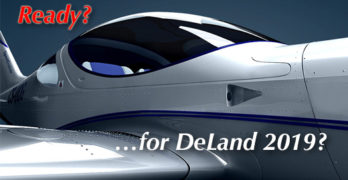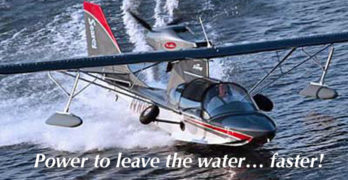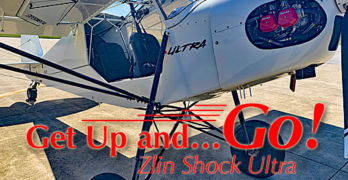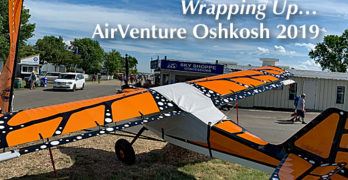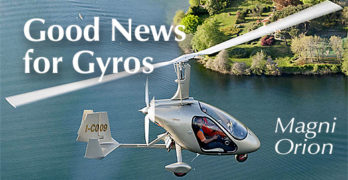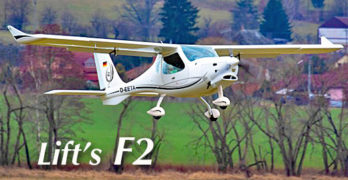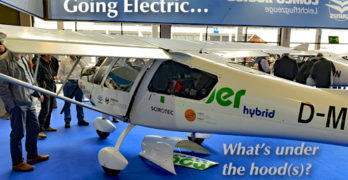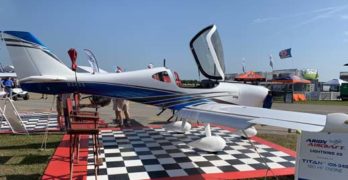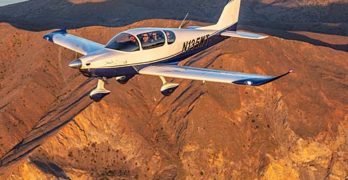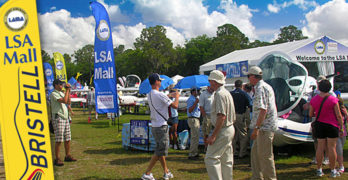In about one week, it all ends. Before then, DeLand Showcase 2019 is set to begin! As this is the last airshow of the year, it’s also fair to say the season ends when DeLand show concludes. This year is the fourth annual event.
Since the Sebring show bid a final farewell last spring, DeLand will be the last light aircraft show until Arizona’s Copperstate/Buckeye Air Fair in February, followed two months later by Sun ‘n Fun. If you live in the eastern half of the USA, DeLand and Sun ‘n Fun are separated by five months. Yikes! You can learn more about Copperstate/Buckeye in this video with the Vice Mayor.
Next week on November 14-15-16, welcome to sunny, warm Florida.
Come to DeLand
I hope many of you who frequent this website will be heading to DeLand for the event starting next Thursday.
Search Results for : 915
Not finding exactly what you expected? Try our advanced search option.
Select a manufacturer to go straight to all our content about that manufacturer.
Select an aircraft model to go straight to all our content about that model.
The Changing Face of Light-Sport Aircraft — Speed and Safety Behind Single Lever Control
In mid-October, FAA provided another update to the Light Aircraft Manufacturers Association. It speaks to bigger — and faster — flying machines ahead for Light-Sport Aircraft. Let’s look at one aspect of the regulation-in-progress.
First, a caveat: While FAA is communicating some of the ideas they are planning for LSA this is an effort of rule writing likely to see more changes.
What LAMA reports to its members and what we provide here is not certain …although it remains well supported at the top of FAA. Even higher in the federal hierarchy, the Department of Transportation recently gave a go-ahead to continue their work. Not all currently planned ideas may survive either the internal debate nor the public comment period.
Single Lever Control
In-Flight Adjustable Prop
This phrase, Single Lever Control, communicates two things: (1) that the system on the airplane seen in the video adjusts the prop to optimal pitch for the phase of flight, and (2) that the system does so based on the pilot’s movement of the throttle combined with its own information about parameters of the aircraft at that time.
The Shockingly-Super Cub — Meet Shock Ultra from Zlin and SportairUSA
Sustained interest in Cub-types has long amazed many of us. About the only airplane that routinely seems to inspire even more passion may be the North American P-51 Mustang. Since almost none of us can afford our own WWII fighter, Cub-a-likes may be the leading light aircraft type that pilots hope to own.
Indeed, between CubCrafters and American Legend, we have two manufacturers pumping out their version of Piper’s venerable Cub. Nothing wrong with that. Indeed CubCrafters lead the parade with their carbon-accented model (to save weight) powered by the awesome 180-horsepower Titan engine.
Along the way, Just Aircraft invented their SuperSTOL, based not on Cub but on their earlier Highlander. It has drawn many admiring glances and sold a number of kits (Just chose not to pursue SLSA approval for this model though their Highlander did qualify).
Then we have Rans and their also-popular S-21 Outbound, a evolution of the company’s S-7 Courier and S-20 Raven.
Oshkosh 2019… All Done! More Great Light-Sport Aircraft Stories (and Video)
The weeklong celebration of flight known around the planet as “Oshkosh” is now history. Although EAA was challenged by inclement weather before the show and as it opened, the weather gods smiled on the event and provided a wonderful week with all the action you can imagine.
EAA announced attendance numbers identifying solid growth over last year, to 642,000 attendees*. That’s a ways from the 800,000 back a couple decades but is solid growth from recent years. Especially as EAA had to work hard to overcome weather issues before the event, the organization is to be commended for handling a huge number of details with professionalism.
The week of Oshkosh brought outstanding weather and only brief periods of rain. Those of us from hot states enjoyed the mild temperatures and beautiful cloud-dappled blue skies (photos).
So, after getting back in the saddle after an intense week, here are a few stories of interest.
Great News for Gyroplanes Such as Magni Gyro + a Video Pilot Report (at Midwest LSA Expo)
For more than 15 years one class of Light-Sport Aircraft has been held down in America even while it has been burgeoning in other parts of the world. The class is LSA gyroplanes, for a decade and half prevented from selling a fully-built model in the USA.
How well is the category doing in other parts of the world? The answer draws on reports from dominant engine producer, Rotax Aircraft Engines, which has reported for years that the class of aircraft buying the most engines has been gyroplanes. Considering the many fixed wing designs also use that engine brand, Rotax’s statement carries tremendous weight.
The story about why gyroplanes were denied the full privileges of Special LSA — and therefore have to be built as Experimental Amateur Built (EAB) kits in America — is a long, sad story …but it is one that appears to be ending, thank goodness!
As described in this recent article about FAA’s plans for revised regulation of LSA (as well as other non-LSA segments), the leash around the neck of gyroplane producers is set for release.
Charging Back into the Lead — Flight Design ga’s F2 and F2e Light-Sport Aircraft (Gasoline or Electric)
Once upon a time in the then-new world of Light-Sport Aircraft Flight Design lead the pack for airplanes delivered and registered. That #1 ranking lasted for a decade.
Then came a pause in the juggernaut that is Flight Design, a German company with a popular design. The company’s expenses outran their revenues and a major restructuring was forced upon them by the German legal system. This was 2015 but at Aero Friedrichshafen 2019, the company was looking strong. Their prominent space in Aero’s huge gymnasium-sized exhibit halls was filled with interesting machines, including the distinctive Horten flying wing.
All these today operate under the parent name, Lift, which also acquired the Rotorvox deluxe gyroplane.
Attracting a lot of attention was their brand-new F-series. Displayed as the first aircraft visitors saw, F2 is an evolved version of the company’s successful CT-series, which remains in active manufacturing.
Aero Friedrichshafen Day 3: ELECTRIC, Hybrid on Tecnam and Comco – Battery on Horten and Bristell
More from Aero as Day 3 closes. Because of the number on display — and because several readers asked — this post will focus on electric propulsion in two distinct forms. Whatever you think about electric as a means of lifting aircraft aloft, escaping its approach appears impossible. Experimentation is happening in all quarters. The following review is far from exhaustive; many other examples could be found at Aero Friedrichshafen 2019.
Most agree that batteries are the weak link in the chain and despite repeated promises of annual increases in energy density of 5-8%, it hasn’t happened over ten years I’ve followed this fairly closely. That does not preclude certain effective uses, for example, local area primary flight training or aerobatic flying. Yet flying cross country on batteries remains somewhere in the future. Nonetheless, projects abound and solutions may be upon us. Here’s what I saw today.
Hybrid Power from Tecnam, Rotax, and Siemens — I had no choice but to drop big names because these three powerhouses are joining forces on a hybrid system.
Sun ‘n Fun Day 3 — Lightning Fast Kit Aircraft, LSA Regulation Questions, and a Tribute
You wanna go fast? Of course you do. What pilot doesn’t want to go fast?
Lightning Fast
Now, ultralight pilots (me, for instance) will go on enthusiastically about the beauty of flying slowly, of drifting leisurely over the landscape at a “human speed” that allows enough time to enjoy the expanse of an aerial view of your surroundings. Open cockpit flying adds to the joy facilitated by low airspeeds.
Yet the allure of going fast is great, zipping over the countryside. I get that and when contemplating a cross country trip of any real distance, fast cannot be too fast. In addition to a higher TAS, we all yearn for a tailwind that will raise our speed by another 20 mph.
Arion Aircraft boss Nick Otterback also feels that desire to fly fast. Along with his since-retired but longtime business partner Pete Krotje, Nick created the dashing, sleek and smooth Lightning, first offered as a kit and a compliant Light-Sport Aircraft.
Breaking News — Sling TSi Will Fly Non-Stop from California to Sun ‘n Fun 2019!
This Just In!
Follow the Sling TSi LIVE tomorrow, Sunday March 31st, 2019, as the new model flies this route: KTOA – KLAL (Coast to Coast) • Torrance, California to Lakeland, Florida, a distance of 1,900 nautical miles
Intended Departure: Sunday at 4 AM Pacific • Landing Florida before 7 PM Eastern in a flight forecast to take “under 12 hours” at a predicted speed of 160 knots (184 mph), at altitude.
You can track the flight on FlightRadar24.
Why would the boys from The Airplane Factory USA make such a long flight non-stop? Their purpose is “to demonstrate the altitude, true airspeed, and endurance/economy of the Sling TSi.” They call out a normal cruise will be at 155 KTAS at 9,500 feet burning eight gallons an hour using the Rotax 915iS. The turbocharged FADEC engine will allow the airplane to climb as high as 20,000 feet.
Ready for Sun ‘n Fun 2019 — Airplanes and Engines on Display in LSA Mall
This year celebrates 15 years of Light-Sport Aircraft and its companion pilot certificate, Sport Pilot. This year also celebrates the 12th year of LAMA providing the LSA Mall. What a fascinating ride it has been!
For 2019, LAMA will again host its special location at the big spring celebration of flight that is Sun ‘n Fun. LAMA is able to mount this attraction thanks to longstanding support from Sun ‘n Fun management and many industry players.
The purpose of the LSA Mall is twofold: (1) present aircraft to visitors in a convenient, enjoyable setting, and (2) showcase the light aircraft industry in one location. The LSA Mall is not limited to Special Light-Sport Aircraft but features Sport Pilot-eligible kit aircraft and ultralights plus specialty light aircraft that may be of interest to pilots.
For 2019, the LSA Mall will add a few previously-owned LSA, as this part of the light aircraft market is developing.
- « Previous Page
- 1
- …
- 10
- 11
- 12
- 13
- 14
- …
- 16
- Next Page »


